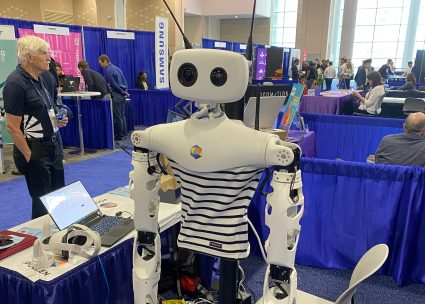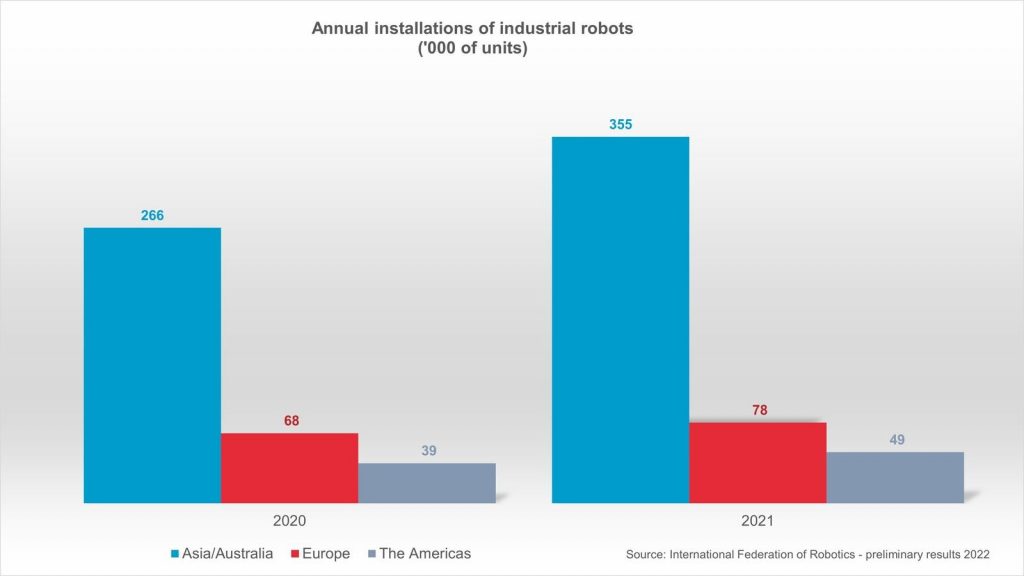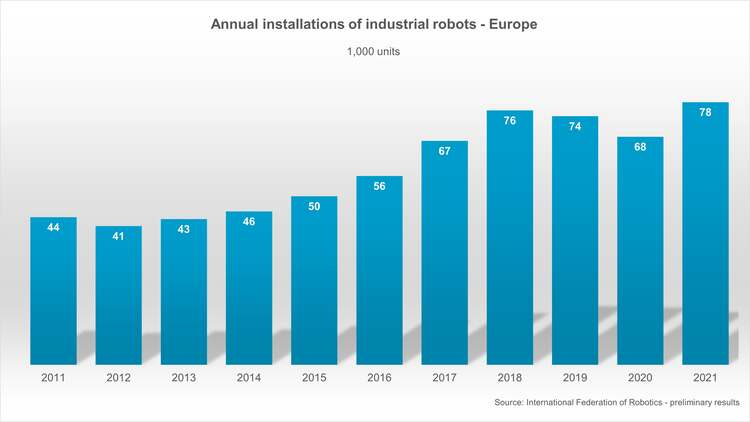Monitoring city mobility from the skies
New shape-shifting material can move like a robot
A framework that could enhance the ability of robots to use physical tools
Future robots could ‘see’ using new type of electronic skin
Swiss Drone Companies leading the way on drone approvals
Wireless Charging Enables Industry 4.0 Implementation with Mobile Robots
Exhibitors from ICRA 2022

At ICRA 2022, the researchers weren’t the only ones working with cutting-edge technology. We spoke to the exhibitors to get real-life demos of their products.
Tangram Vision
Tangram Vision is a hardware-agnostic sensor fusion platform. It streamlines the development and deployment of critical sensor infrastructure like calibration, fusion, and monitoring for any number of cameras, depth sensors, LiDAR, radar, and IMU. Their co-founder, Adam Rodnitzky, walks us through their sensor fusion platform.
FLX Solutions
Matt Bilsky, Founder and CEO of FLX Solutions gives us a live demo of their robot, the FLX BOT. Matt Bilsky applied his Ph.D. in Mechanical Engineering to create a novel, highly compact robot that is designed to reach and inspect parts of a building that a human cannot reach. The FLX BOT is one inch in diameter and is made of modular links that can be attached one after the other to extend the reach and degrees of freedom of the robot.
Exyn Technologies
Exyn Technologies specializes in aerial robotics, drone swarms, multi-modal sensor fusion, 3D mapping, obstacle avoidance, and autonomous navigation & planning.
Exyn’s focus is on developing software for aerial robots so they can operate in GPS-denied environments, without human control, prior information, or pre-existing infrastructure (e.g. no motion capture system).
Pollen Robotics
Pollen Robotics developed the robot, Reachy, an open-source humanoid robot with a quirky appearance. Reachy’s primary userbase is researchers studying fields such as teleoperation. Using mixed autonomy, Reachy is able to be teleoperated by humans, while still having onboard intelligence to autonomously infer the actions you want it to do.
A new approach to enhance multi-fingered robot hand manipulation
Intuitive physics learning in a deep-learning model inspired by developmental psychology
Intuitive physics learning in a deep-learning model inspired by developmental psychology
Robot sales surge in Europe, Asia and the Americas
Sales of industrial robots have reached a strong recovery: A new record of 486,800 units were shipped globally – an increase of 27% compared to the previous year. Asia/Australia saw the largest growth in demand: installations were up 33% reaching 354,500 units. The Americas increased by 27% with 49,400 units sold. Europe saw double digit growth of 15% with 78,000 units installed. These preliminary results for 2021 have been published by the International Federation of Robotics.

Preliminary annual installations 2022 compared to 2020 by region – source: International Federation of Robotics
“Robot installations around the world recovered strongly and make 2021 the most successful year ever for the robotics industry,” says Milton Guerry, President of the International Federation of Robotics (IFR). “Due to the ongoing trend towards automation and continued technological innovation, demand reached high levels across industries. In 2021, even the pre-pandemic record of 422,000 installations per year in 2018 was exceeded.”
Strong demand across industries
In 2021, the main growth driver was the electronics industry (132,000 installations, +21%), which surpassed the automotive industry (109,000 installations, +37%) as the largest customer of industrial robots already in 2020. Metal and machinery (57,000 installations, +38%) followed, ahead of plastics and chemical products (22,500 installations, +21%) and food and beverages (15,300 installations, +24%).
Europe recovered
In 2021, industrial robot installations in Europe recovered after two years of decline – exceeding the peak of 75,600 units in 2018. Demand from the most important adopter, the automotive industry, moved at a high level sideways (19,300 installations, +/-0%). Demand from metal and machinery rose strongly (15,500 installations, +50%), followed by plastics and chemical products (7,700 installations, +30%).

The Americas recovered
In the Americas, the number of industrial robot installations reached the second-best result ever, only surpassed by the record year 2018 (55,200 installations). The largest American market, the United States, shipped 33,800 units – this represents a market share of 68%.
Asia remains world’s largest market
Asia remains the world’s largest industrial robot market: 73% of all newly deployed robots in 2021 were installed in Asia. A total of 354,500 units were shipped in 2021, up 33% compared to 2020. The electronics industry adopted by far the most units (123,800 installations, +22%), followed by a strong demand from the automotive industry (72,600 installations, +57%) and the metal and machinery industry (36,400 installations, +29%).
Video: “Sustainable! How robots enable a green future”
At automatica 2022 trade fair in Munich, robotics industry leaders discussed, how robotics and automation enable to develop sustainable strategies and a green future. A videocast by IFR will feature the event with key statements of executives from ABB, MERCEDES BENZ, STÄUBLI, VDMA and the EUROPEAN COMMISSION. Please find a summary soon on our YouTube Channel.